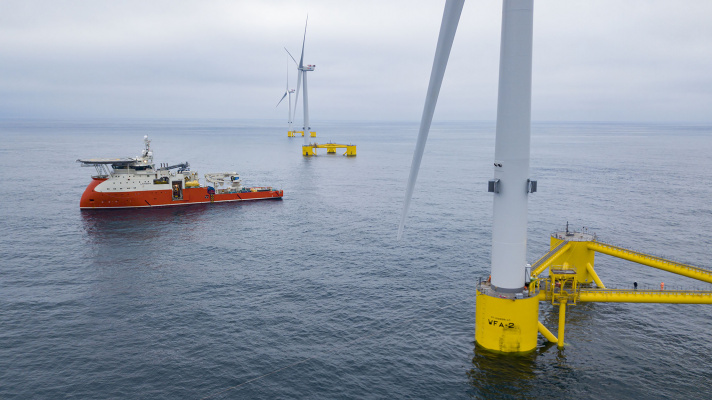Floating wind farms: new challenges for shipbuilders

Modern technologies make it possible to intensify the further development of wind energy with a gradual transition from stationary offshore wind farms to floating ones, for the maintenance of which specialized vessels of a new type will be needed.
According to recent studies, if traditional wind turbines on powerful (mostly concrete) foundations can be installed at depths of no more than 50 meters, then floating structures of the same purpose can be installed in the open ocean, at depths of up to 1000 m or more. Thus, the use of new technologies in this area makes it possible to significantly expand the regions of wind energy generation, using for this regions with traditionally strong and constant winds.
It is encouraging that thanks to the use of promising technical and technological developments, the cost of production and, especially, maintenance of floating wind farms has acquired a steady downward trend, the rate of which is increasing every year. Another powerful factor stimulating the development of this direction of “green” energy generation is the next surge in oil and natural gas prices.
To date, the Norwegian state energy company Equinor has successful experience in operating floating wind farms, which operates two fields of this type in the North Sea - Hywind Scotland (5 units with a total capacity of 30 MW) and Hywind Tampen (8 units, 88 MW). In the near future the company plans to further increase the number of floating stations and develop even more powerful turbines of modular design (up to 20 MW each).
The British generating company Cerulean Winds in 2024 expects to start implementing a large-scale project to install a network of 200 floating wind farms along the coast of the Shetland Islands, with a total generation capacity of up to 3GW of electricity.
The predominant use of floating rather than stationary generating structures inevitably raises the question of the development and construction of new vessels for their installation and further maintenance. According to Western industry experts, the main features of promising projects will be increased requirements for the accuracy of dynamic positioning of specialized vessels and a significant increase in their seaworthiness.
At the same time, due to the more compact size and modular design of floating generators, the size of the deck loading (cranes) and auxiliary equipment can be significantly reduced.

